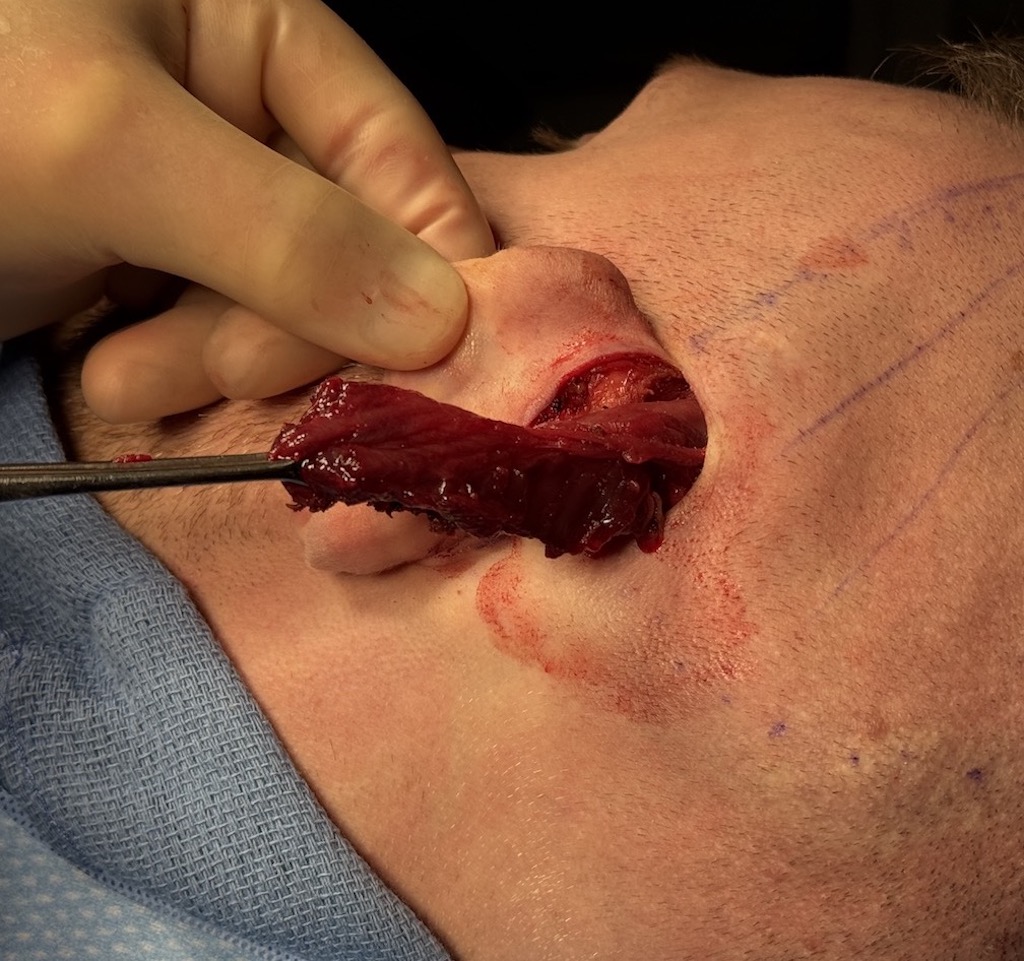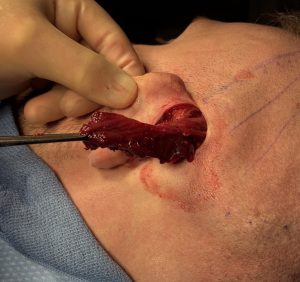Background: In the patient with a wide or overly convex head shape the question is always is this a function of the bone or muscle. To accurately answer this question one has to look at the anatomy of the temporal bone and muscle which makes up the side of the head. The temporal bone is comprised of two very different shaped areas. In the anterior temporal area by the side of the eye the temporal bone has a deep concave shape. But it changes from a deep concavity to a convexity as it continues back towards the ear. As a result the thickest part of the overlying temporal muscle is by the side of the eye while the thinnest part is back behind the ear. The thickness of the anterior temporal muscle can easily be 3 to 4 cm while the thickness of the posterior temporal muscle decreases to 1.2 cm or less above the ear. As a result of this anatomy it is logical for most to think that to reduce the width of the side of the head this requires bone removal particularly in the posterior temporal zone.
But the reality is temporal muscle removal alone can be very effective at narrowing the head shape in that properly selected patient. While a 2D CT scan is the most accurate method to assess the muscle versus bone contribution to the wide head there are certain patient types where their appearance alone indicates a significant muscle thickness whose removal could produce a good result. In the thick scalp patient, who often has increased skin pigmentation, the posterior temporal muscle thickness it is almost always of great significance. But regardless of skin pigmentatiopatients that have a flatter or less projected face often have wide heads where, while the temporal bone will have an increased convexity, the muscle thickness will also be significant.
Besides these phenotypic tendencies there are also a few tests that one can do to determine whether muscle removal will be aesthetically helpful for narrowing the head shape. The jaw opening maneuver, where one opens their lower jaw as much as possible, should it produce an improved head shape is indicative of the potential benefits of temporal muscle removal. Also, if one has a history of Botox injections into the temporal muscle that has had an observable positive effect this is another indicator of the benefits of muscle removal. But in either case both of these preoperative tests underestimates what surgical muscle removal can do as these tests thin the muscle but they do not account for the effects of complete muscle removal.
Case Study: This male had a wide head shape that has always bothered him since he was a young child. It was also a head shape for which he was teased in his younger years. He had a craniofacial shape which was wide from side to side but also lacked forward facial projection. As a fair complexion male his temporal muscle were quite thick and he had a history of Botox injections to try and reduce them. There was also asymmetry with the left side being bigger/wider than the right side.
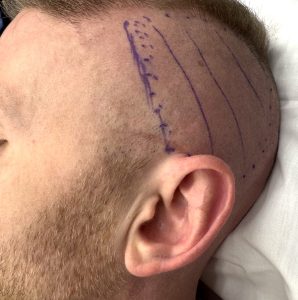
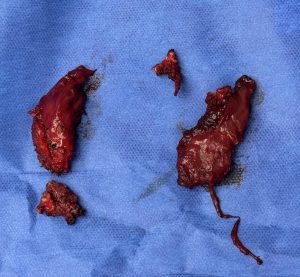
In closing the incisions the now increased protrusion of the ears was reduced by suture technique to reduce their now increased cervicomental angles.
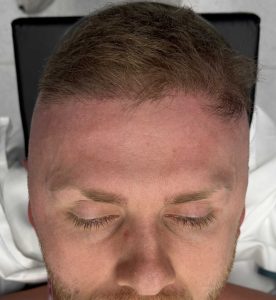
In male patients that have a wide convex head shape the thickness of the temporal muscle usually makes a significant contribution. There are multiple methods in determining whether temporal muscle thickiness is a contributing factor including a 2-D CT scan, the wide mouth opening maneuver as well ss whether the patient has had a prior history of successful Botox injections. If adequate temporal muscle thickness exists the postauricular technique for its reduction can be very effective.
In performing temporal muscle reduction from an incision behind the ear the most important consideration is the line of the muscle cut. On the one hand you want this angled cut as far forward as possible to get the maximum bitemporal width reduction. On the other hand the further forward this angled cut becomes into the much thicker anterior temporal muscle the risk of long-term muscle edge show increases. The one method that I have found that reduces the risk of muscle edge show as much as possible is a good fascial closure over the reduced temporal muscle. This has a dampening effect on the muscle edge. Well it is not a guarantee that muscle ad show is never possible I have certainly founded to be very useful in its reduction/ prevention.
Another technical consideration with temporal muscle reduction is that it may make the ears stick out further in their superior half then they did before surgery. This is really a sign of a good result as it indicates the contribution of the temporal muscle to the convex head shape but it can also be an undesired aesthetic trade-off if not intraoperatively managed in some patients. During incisional closure a few extra sutures can be placed to tighten up the ear against the side of the head to ensure that an undesided auriculocephalic angle does not occur.
Key Points:
1) In the wide head patient the contribution of excessive temporal bone concavity vs temporal muscle thickness must be preoperatively determined.
2) Faces that lack midface horizontal projection in particular are prone to increased bitemporal widths.
3) The postauricular approach to temporal reduction can be very effective of adequate muscle thickness exists with a primary goal of maximum muscle removal with limiting the long term aesthetic risk of muscle edge show.
Dr. Barry Eppley
World-Renowned Plastic Surgeon

